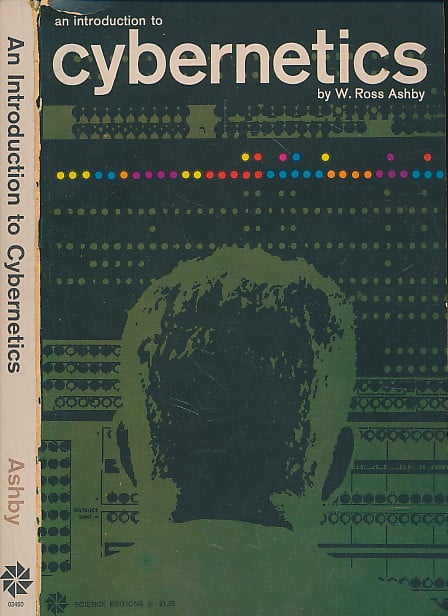An introduction to cybernetics
Izvorna cijena bila je: €20,00.€16,00Trenutna cijena je: €16,00.
Na zalihi
| Težina | 399 g |
|---|---|
| Format | 14 × 21 cm |
| Autor | |
| Izdavač | |
| Mjesto izdanja | New York |
| Godina | 1963 |
| Broj stranica | 295 |
| Uvez | Meki |
| Stanje knjige | Vrlo dobro |
5.0 out of 5 stars A brilliant treatise on the relationship between entropy (choice, variety) and powerful means of constraint (selection, control) Reviewed in the United States on January 31, 2014 Many books have been written on the topic of control system theory. After reading a number of such books I can say without reservation Dr. Ashby’s is the best treatment of the subject, bar none. His perspective is unique and wholly comprehensive. To elaborate let me say that one of the goals of any introductory text is to provide a general overview of the subject matter in as clear and concise of manner as possible. Dr. Ashby does one better. Not only does he accomplish this aim, but while doing so he manages to develop a theoretical and technical foundation of understanding that goes right to the bedrock of eternity itself. For instance one of the most primitive but arcane concepts in all physics is entropy. I personally spent decades trying to reduce entropy to a simple understanding but was always confounded by the entropy is a measure related to heat engines, but also related to disorder, rhetoric. After all, pragmatically what do heat engines and scrambled eggs have in common? I sure wasn’t able to connect the dots in any kind of intelligent way. Moreover it seemed no one else could either. After reading dozens of various books on the matter the explanations of the authors always fell short of offering the simple enlightenment I sought. However, in Intro to Cybernetics Dr. Ashby not only explores entropy in a way that is drop-dead simple (the entropy factor is overshadowed by a general principle which governs more than a reservoir of heat energy), but he goes on to show how information and control principles are the flip-side of the entropy principle. Tersely, the entropy principle is abstractly about variety or choice (reflected in Boltzmann’s S=kLogW), while information and control is about selection and constraint. Everyone has experience with this model. Consider that laundry taken from a dryer and cast on a bed can potentially fall into a multiplicity of different arrangements. But it is only after a cybernetic mechanism uses certain rules of selection to apply some measure of constraint that the state of the laundry converges to an orderly stack. Also consider that a car moving along a roadway literally has innumerable trajectories it can follow at any point along the path. However cars typically arrive safely at their destinations thanks to a control mechanism which uses sophisticated selection rules to apply constraint to the vehicle so as to avoid disastrous outcomes. Moreover, The unique selections of genes and genetic activity in the metabolisms of various organisms act to constrain the ordering of raw matter to the specific types of structures and behaviors these things possess. This too is an example of how information and control mechanisms limit the possible arrangements of matter to a very narrow subset, i.e. a dog, a cat, etc. In fact, Dr. Ashby is able to show how this abstract model of variety vs. constraint literally expands so as to overshadow everything going on under the sun, from the very simple to the highly sophisticated. Nobody explains this model better than W. Ross Ashby. In fact, I don’t know of anyone who’s talked about the subject in this manner. For this, I think Dr. Ashby was a true visionary, and surely one of the great minds of science in the twentieth century. An Introduction to Cybernetics is clearly a classic work equivalent to Newton’s Principia Mathematica. Everyone with an interest in science and engineering should read it. Some formal training in science and engineering is probably a necessary prerequisite for getting the most from it.
